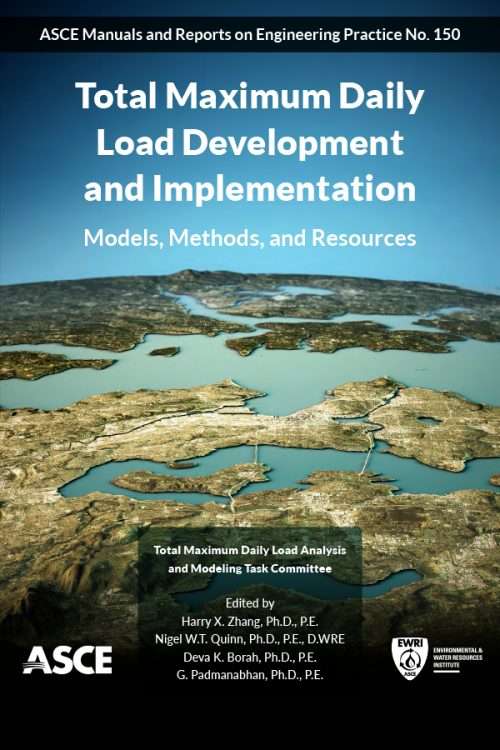New ASCE Manual of Practice 150 Provides Guidance on Total Maximum Daily Loads

Reston, Va. – The total maximum daily load (TMDL) is a regulatory term associated with the United States Clean Water Act describing a plan for restoring the quality of impaired waters. ASCE’s newest Manual of Practice, Total Maximum Daily Load Development and Implementation, MOP 150, describes the state-of-the-practice and provides guidance to practitioners in selecting analytical tools and models in the development of a total maximum daily load and its implementation plan.
The manual provides detailed descriptions of a variety of watershed and receiving water quality models that can be used, highlighting recent advances in TMDL analysis and modeling.
Topics covered in this book include:
- Watershed models, receiving water models, and integrated modeling systems and linked models;
- Critical condition determination for TMDL modeling;
- Model data, geographic information systems, and remote sensing;
- Model calibration and validation, and model uncertainty analysis and margin of safety;
- USEPA TMDL report archive and report search tool;
- Model selection and applications for TMDL development; and
- Modeling for TMDL implementation.
Anyone engaged in the practice of TMDL analysis and modeling, including engineers, water quality professionals, regulators, and other water resource and watershed managers charged with development and implementation of TMDLs, will find this a valuable resource.
To purchase online visit the ASCE Bookstore
Limited review copies are available for book reviews. Please contact Leslie Connelly, [email protected].
About ASCE
Founded in 1852, the American Society of Civil Engineers represents more than 150,000 civil engineers worldwide and is America’s oldest national engineering society. ASCE works to raise awareness of the need to maintain and modernize the nation’s infrastructure using sustainable and resilient practices, advocates for increasing and optimizing investment in infrastructure, and improve engineering knowledge and competency.


